Closer! Juno will prepare for flyby close to Europa
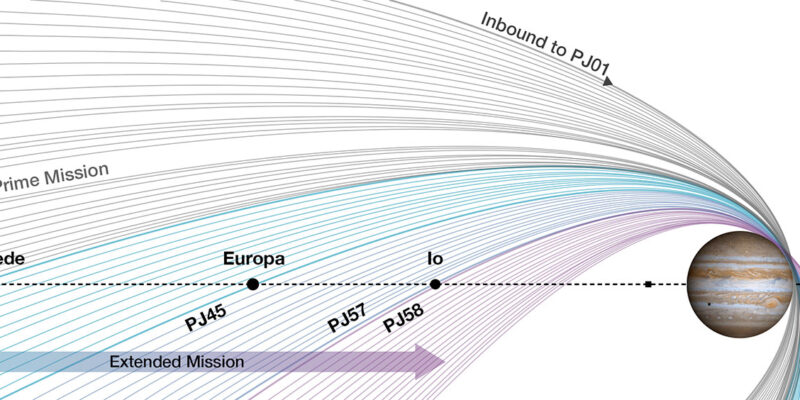
Overview
NASA’s Juno probe is about to make a “close encounter” with Jupiter’s moon Europa. It is preparing for the closest flyby to the satellite in decades.
On Thursday, NASA detailed [1] the probe’s plans to collect data and images during its close approach scheduled for Thursday, September 29.
Juno

Juno
Juno[2] is a NASA space probe orbiting the planet Jupiter. It was built by Lockheed Martin and is operated by NASA’s Jet Propulsion Laboratory.
The spacecraft was launched from Cape Canaveral Air Force Station on 5 August 2011 UTC, as part of the New Frontiers program. Juno entered a polar orbit of Jupiter on 5 July 2016 UTC, to begin a scientific investigation of the planet. After completing its mission, Juno will be intentionally deorbited into Jupiter’s atmosphere.
Juno is the second spacecraft to orbit Jupiter, after the nuclear powered Galileo orbiter, which orbited from 1995 to 2003.
Unlike all earlier spacecraft sent to the outer planets, Juno is powered by solar panels, commonly used by satellites orbiting Earth and working in the inner Solar System, whereas radioisotope thermoelectric generators are commonly used for missions to the outer Solar System and beyond. For Juno, however, the three largest solar panel wings ever deployed on a planetary probe play an integral role in stabilizing the spacecraft as well as generating power.
It has already observed Ganymede, and now it is ready to give Europa some time in the spotlight.
Europa

Europa
Europa[3], or Jupiter II, is the smallest of the four Galilean moons orbiting Jupiter, and the sixth-closest to the planet of all the 80 known moons of Jupiter.
It is also the sixth-largest moon in the Solar System. Europa was discovered in 1610 by Galileo Galilei and was named after Europa, the Phoenician mother of King Minos of Crete and lover of Zeus (the Greek equivalent of the Roman god Jupiter).
The Plan
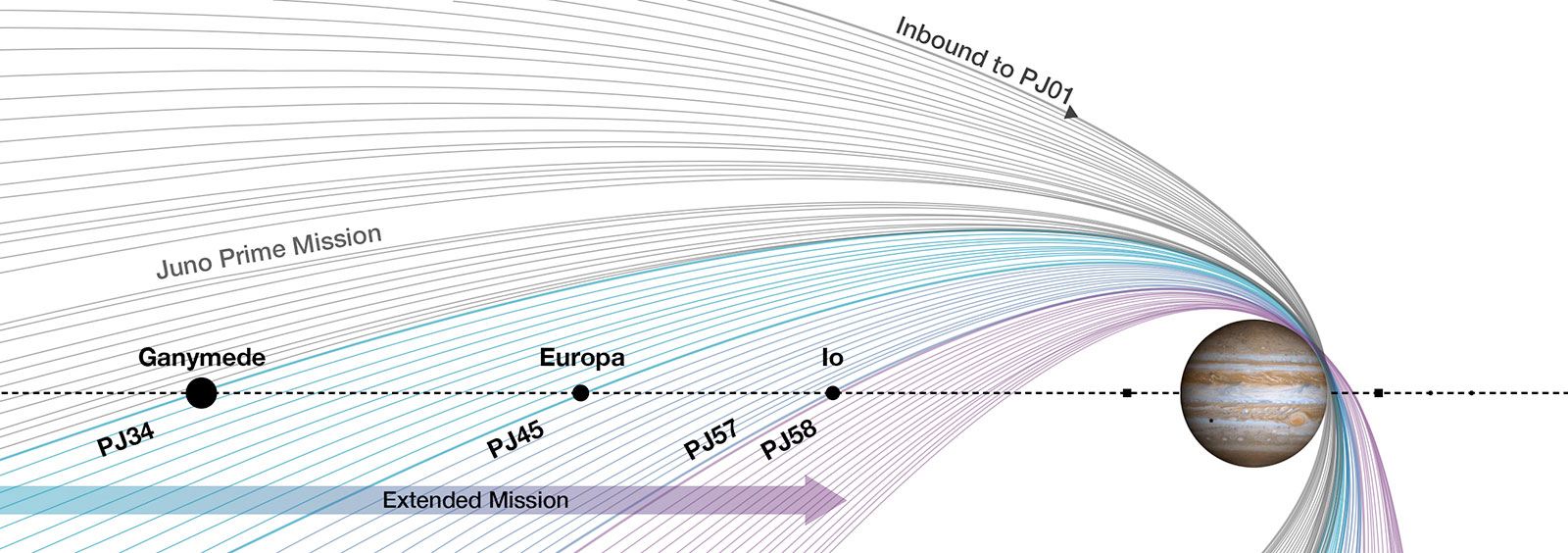
Juno’s extended mission includes flybys of the moons Ganymede, Europa, and Io. This graphic depicts the spacecraft’s orbits of Jupiter – labeled “PJ” for perijove, or point of closest approach to the planet – from its prime mission in gray to the 42 orbits of its extended mission in shades of blue and purple.
Juno’s Microwave Radiometer (MWR) will peer into Europa’s water-ice crust, obtaining data on its composition and temperature. This is the first time such data will have been collected to study the moon’s icy shell.
In addition, the mission expects to take four visible-light images of the moon with JunoCam (a public-engagement camera) during the flyby. The Juno science team will compare them to images from previous missions, looking for changes in Europa’s surface features that might have occurred over the past two decades. These visible-light images will have an expected resolution better than 0.6 miles (1 kilometer) per pixel.
Although Juno will be in Europa’s shadow when closest to the moon, Jupiter’s atmosphere will reflect enough sunlight for Juno’s visible-light imagers to collect data. Designed to take images of star fields and search for bright stars with known positions to help Juno get its bearings, the mission’s star camera (called the Stellar Reference Unit) will take a high-resolution black-and-white image of Europa’s surface. Meanwhile, the Jovian Infrared Auroral Mapper (JIRAM) will attempt to collect infrared images of its surface.
Juno’s closeup views and data from its MWR instrument will inform the Europa Clipper mission, which will perform nearly 50 flybys after it arrives at Europa in 2030. Europa Clipper will gather data on the moon’s atmosphere, surface, and interior – information that scientists will use to better understand Europa’s global subsurface ocean, the thickness of its ice crust, and possible plumes that may be venting subsurface water into space.
The Future
Juno isn’t content to study just Europa and Ganymede. Io
will be the next target in 2023.
References:
[1]NASA’s Juno Will Perform Close Flyby of Jupiter’s Icy Moon Europa | NASA

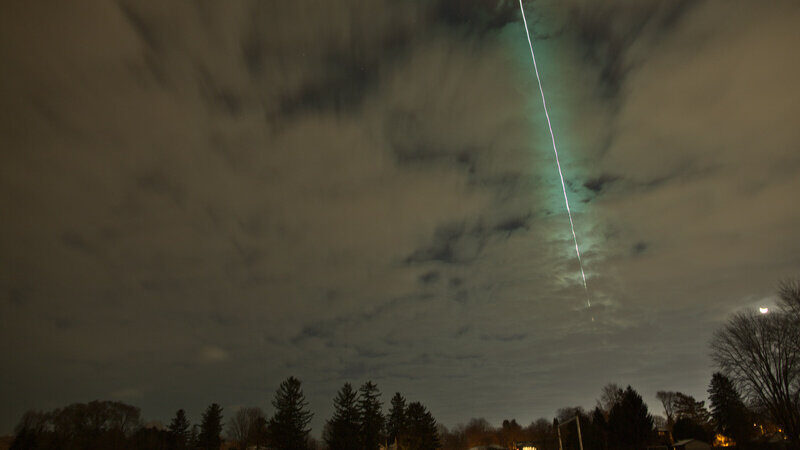
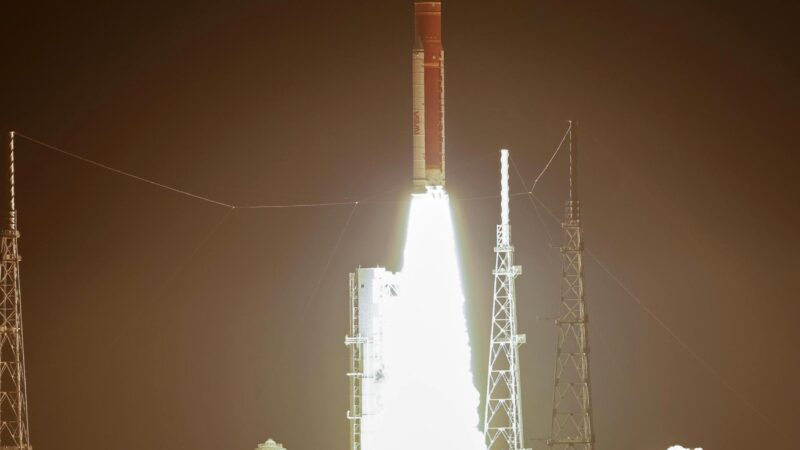

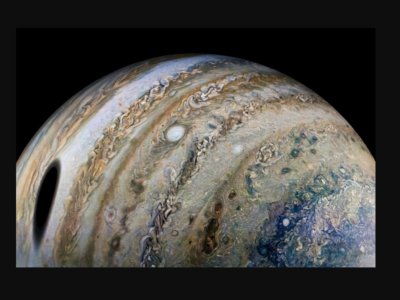
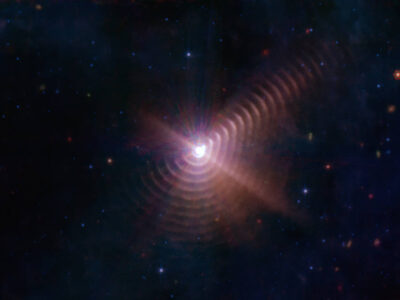





So is there life in Europa?